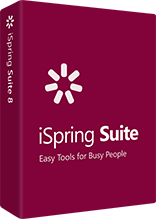7 Ways to Structure Your Work Environment for Self-Directed Learning

Gone are the Office Space days of isolated cubicles where workers are expected to keep to themselves. In this social day and age, cubicle walls have come down, desks now meet in friendly islands, and workers want to learn from the others around them. In fact, 31 percent of people leave their jobs due to a lack of empowerment according to one study, while according to another, 33 percent leave due to a lack of perceived growth potential.
The good news? You can address both of these problems by creating a culture of self-directed learning (SDL) at your organization. Doing so cultivates employee engagement by giving them both the opportunity to learn and to teach, which cements concepts and majorly boosts agency. Plus, when employees teach one another, the result is a very cost-effective staff training strategy. What’s to lose? Here are seven ways to structure your work environment for self-directed learning.
- Explain What SDL Is to Current and New Employees. Self-directed learning is a complex concept usually applied to traditional learning environments, such as elementary classrooms or universities. However, SDL principles are very much applicable to the working world. In short, these principles include:
- SDL should coincide with our natural desire for lifelong learning
- Programs should be adapted to an individual’s maturation process – this can mean mental or skill-based maturation
- Academic pursuits should be paired with social, technical and personal drives
- Programs should employ all of our senses and capacities
- The setting in which SDL is conducted should foster the learning
Obviously some of these goals are more achievable than others in an adult workplace, but explain each principle to your employees so they understand how best to approach SDL, cultivate a conducive setting for themselves, and engage with new material. Then explain the emphasis you place on it in your workplace so they know that initiative, self-direction and knowledge-building are prized at your company.
- Allow Time for Exploration. Once your employees know what it is, you must give them time to do it. Set aside SDL periods during the day or week, where workers can use each other or company resources to build their knowledge or to learn where they need improvement. Approve talk among employees that is geared toward bettering a routine, a team or the workplace as a whole.
- Facilitate Outside Learning. Encourage professional certification, continuing education and organization membership to increase the amount of outside education. That is all valuable knowledge that your employees can bring back into the company to share with one another.
- Set Learning Goals. Unfortunately, many organizations see learning as a thing of the past, but recent research indicates that viewing the workplace as a curriculum that workers must master can be a very useful mindset. In this approach, the normal workday of an employee informs what they need to learn in order to do their job most successfully. The tasks they perform become the curriculum components they need to learn, making it easy to set identifiable goals.
Employees should also set a target length of time in which to master this goal before moving on to the next. This builds natural stepping-stones between the current job and the next level at the organization, as mastery of each goal can bring them closer to promotions, raises, increased responsibility, or other rewards. - Identify “Trainers” and “Educators” Among Your Regular Staff. This step is especially cost-effective, because you use resources you already have on-staff. Look for employees who would be particularly good at training new workers, and others who can teach a specific task, unit or concept to groups of people. Identifying these trainers and educators and incentivizing their cooperation shows them they’re valuable and gives the rest of the company another role to strive toward, if desired.
- Create Peer-to-Peer Accountability. According to the Harvard Business Review, the most successful teams hold themselves accountable. This means accountability among peers, but it also means subordinates who hold their bosses accountable. Make it clear that workers are free to hold one another as well as their leaders accountable for teamwork and decision-making.
- Employ Technology. In the Internet age, technology facilitates learning quickly, efficiently and cheaply. As a solo activity, SDL benefits mightily from technology, because “students” can search for and find information that pertains directly to their problem. Even if your employees don’t work in a traditional office setting, make sure they have access to online resources as well as company training modules. This improves trust, creates empowerment, and keeps valuable employees around and learning over the long haul.
Keeping employees motivated and preventing them from leaving for greener pastures are two challenges that every company faces, and with self-directed learning you have a golden opportunity to achieve both goals. Keep in mind that changing a culture can be slow and arduous work, so institute one change at a time, asking for worker input along the way. Also remember that as a boss or member of the HR Department, you too can always be learning, so chalk mistakes up to effort and keep going. One day you’ll look around and see that your vision has been realized.
Self-directed learning is a novel way to keep workers motivated and always learning. With a few intentional steps, you can turn your workplace into one that fosters nonstop learning.
Join the conversation! Share your SDL stories and suggestions in the comments below!

